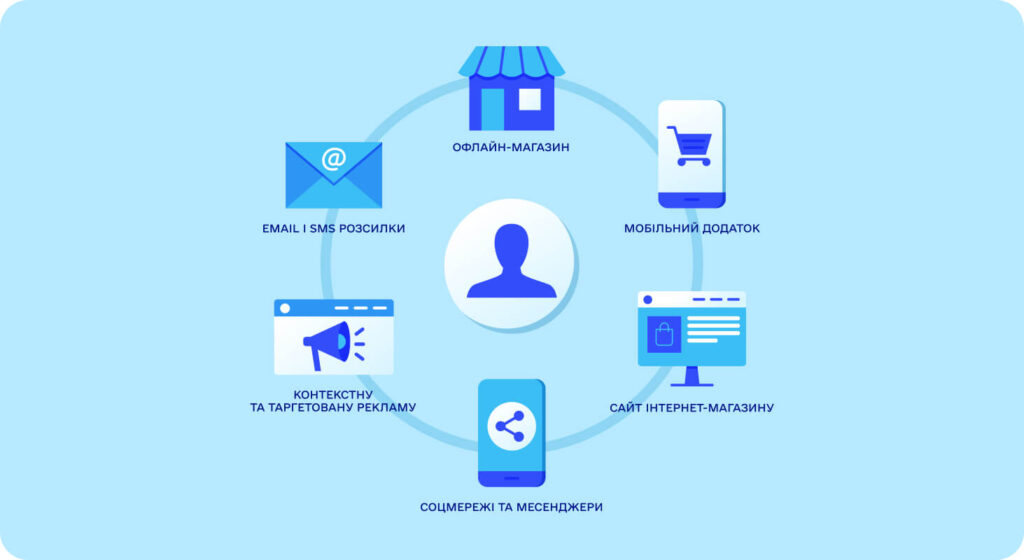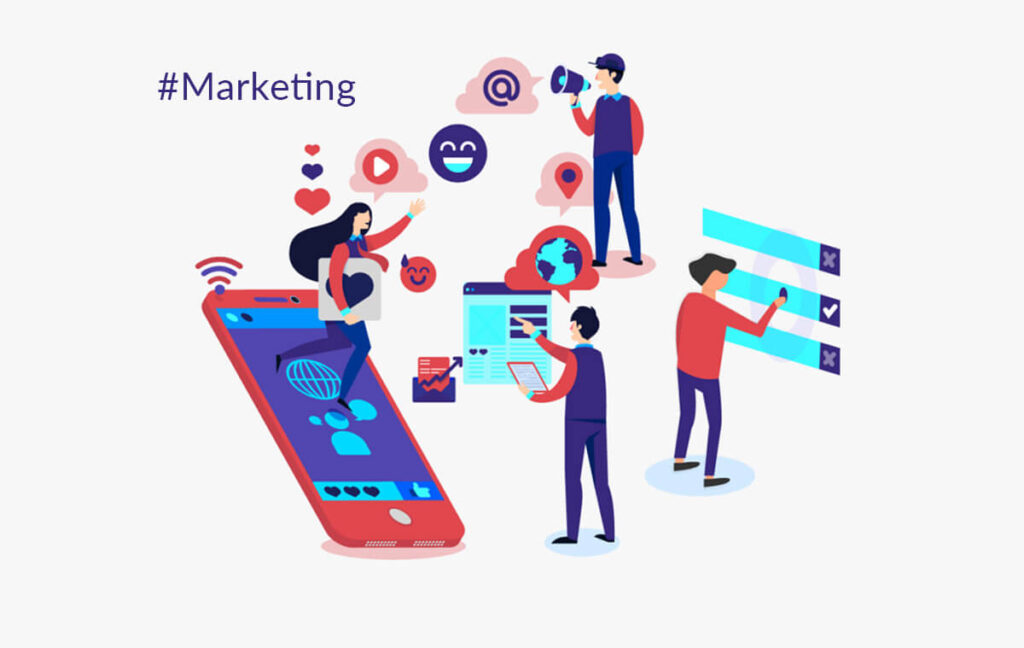Don't miss interesting news

How omnichannel marketing works: important transformations of customer interaction. We understand why it should be implemented.

Did you know that 86% of shoppers regularly switch between two or more websites? They don’t just “move” from one online store to another, from laptops to smartphones and tablets, from clothing sites to jewelry or watches. These are the main reasons why 87% of retailers believe that an omnichannel marketing strategy is a priority for their business.
A study by the Harvard Business Review, conducted back in 2017 among 46,000 shoppers, showed that:
As you can see, in this case, the “More is better” rule works well.
What is omnichannel marketing? Omnichannel marketing is about creating a presence for your brand across multiple online channels (website, app, social media, email, SMS, WhatsApp) and offline (retail store, events, call center), while providing a positive and seamless experience throughout the entire path to purchase.
The main idea of omnichannel is a unified personalized interaction. When each hand knows what the other is doing. Everything is based, of course, on information: not only about who your client is, but also about the ways they should come to you, what they need, and what problems you can solve. It is important that the data collection is constant and methodical, and its processing and analysis are scrupulous and comprehensive.
If done right, it’s a win-win situation: businesses get more reach, loyal customers, and higher sales, and customers get a convenient, consistent, and personalized shopping experience.

Some people may confuse omnichannel and multichannel marketing, because they have a lot in common. Multichannel marketing is the simultaneous promotion of goods and services through different channels. But in this case, unlike omnichannel marketing, the actions of all promotion channels are distinguished. Within the framework of multichannel marketing, each channel may have its own promotion strategy and not be coordinated with each other. For example, a customer sees an email with a promotional offer and calls the store to consult about a promotional product, and a few days later receives a newsletter about the same promotion, but on Viber. Thus, the same customer switching between channels will be perceived as a new one every time. This can lead to misunderstandings in customer service and a lower level of service.
Omnichannel marketing is the next step in the development of multichannel marketing. No channel of communication with customers works independently of the others. The store does not lose track of customers, collects and organizes information about them, and has clear communication.
A successful omnichannel marketing strategy has three components:
The development of digital channels and online shopping has changed the marketing industry forever. But if you take a closer look, the omnichannel approach is not only changing marketing, but also improving the entire eCommerce industry.
By providing personalized and seamless experiences across multiple touchpoints, companies can meet the unique needs and preferences of their customers. As a result, customer loyalty grows, reviews increase, and brand reputation improves. It’s a win-win situation for any business that wants to thrive in the modern digital market.
Personalized and relevant customer experiences across multiple channels are already enough to drive sales and conversion rates. But that’s not all – by collecting data from different points of interaction, companies can also identify opportunities for cross-selling and upselling. This is how omnichannel marketing contributes to even greater profit growth.
Creating a positive experience across multiple touchpoints ensures that customers feel valued and respected. The more effectively a business does this, the higher the satisfaction and retention rates. Improved retention rates usually mean a significant increase in customer lifetime value and profitability.

Campaign management provides a holistic view of customer behavior and preferences. Armed with this information, businesses can identify patterns and insights that will help them make better decisions.
This data can be used to track the success of different campaigns and evaluate their performance.
With more data about the customer journey, companies can make more informed decisions about reducing the number of touchpoints needed to complete a purchase. This shortens the sales cycle and results in faster transactions. As brands have more control over the customer journey, they can also automate certain processes, such as handling customer support requests.
Omnichannel marketing is a very cool tool in business management and customer service. Companies that put it into practice provide their customers with the best user experience. If your business is already so developed that you have an offline and an online store, then think about implementing omnichannel marketing. It requires more effort, but it’s worth it.